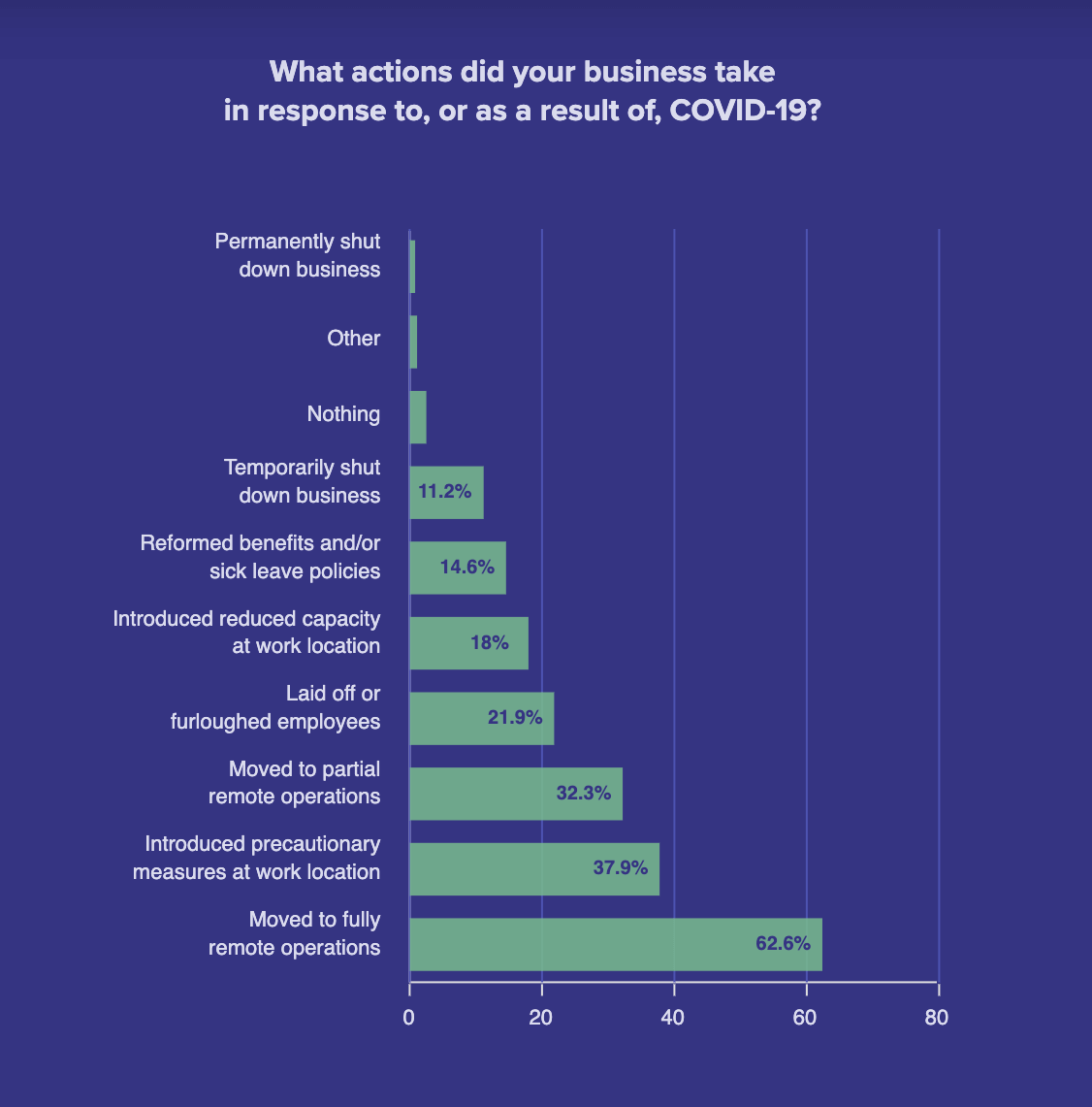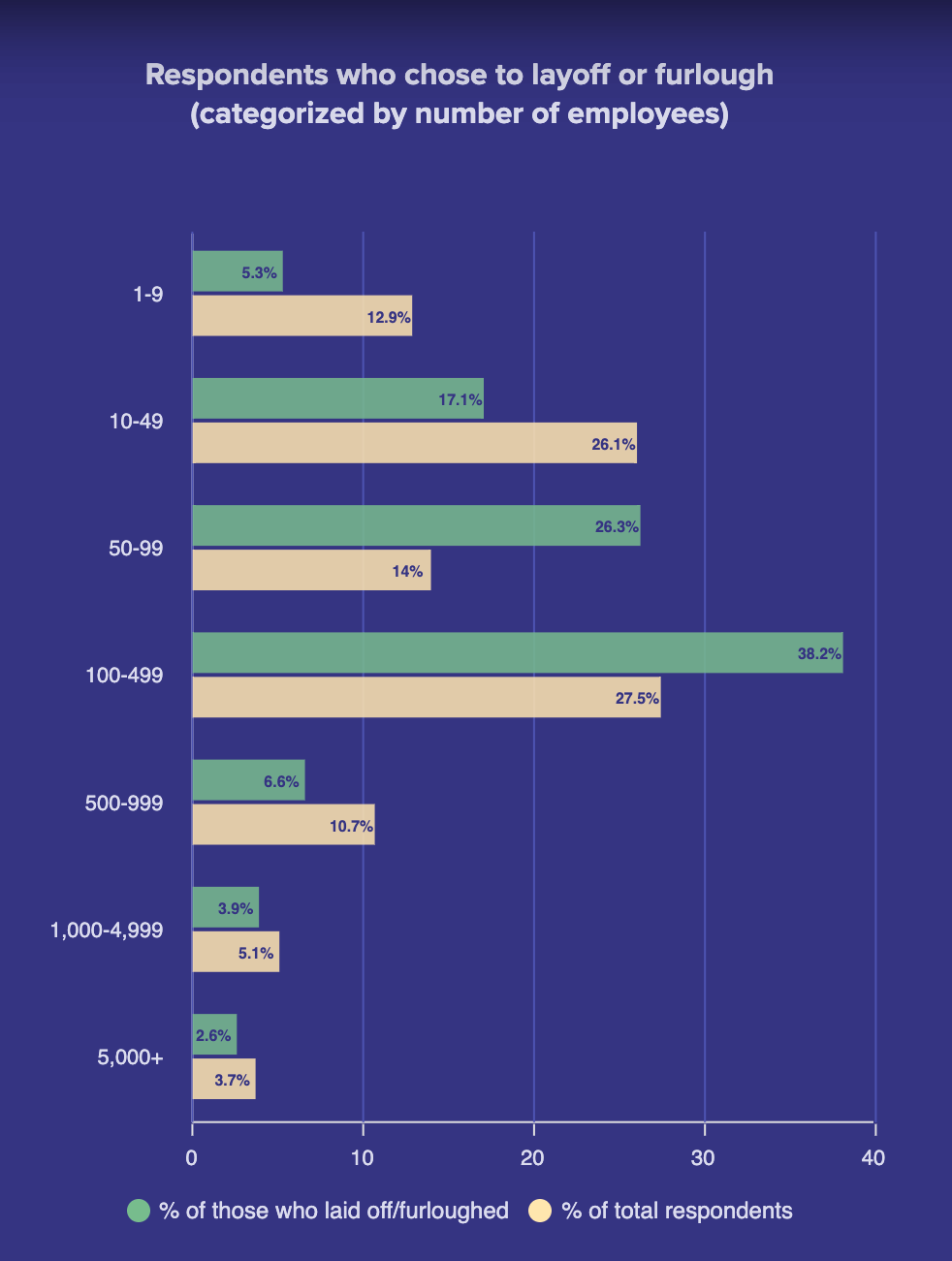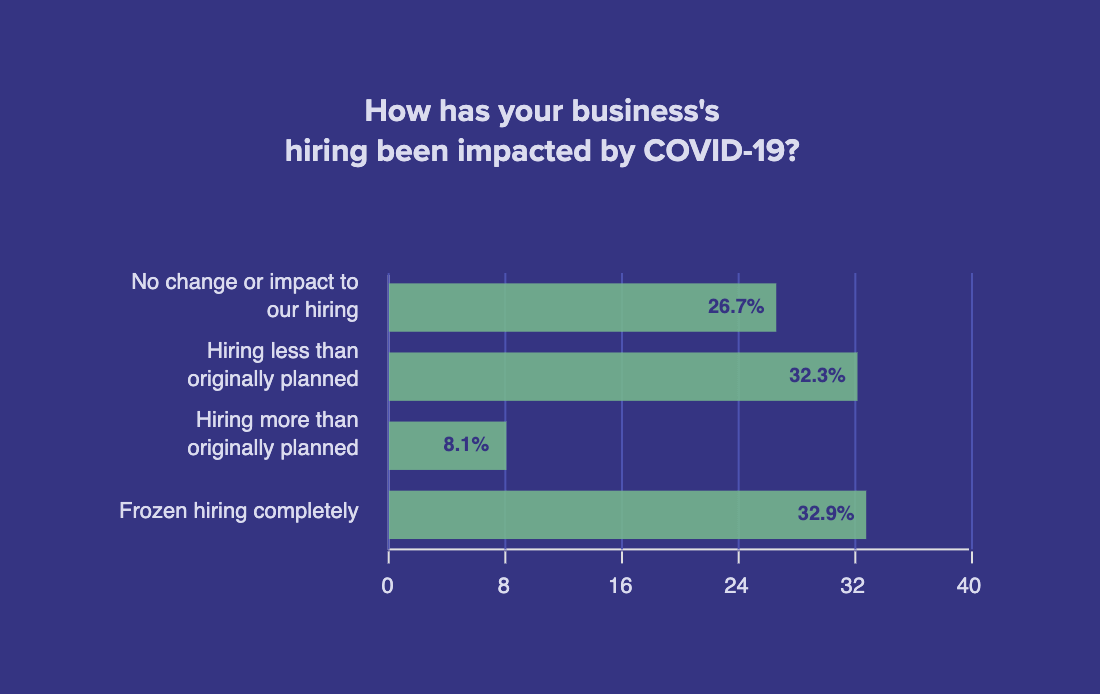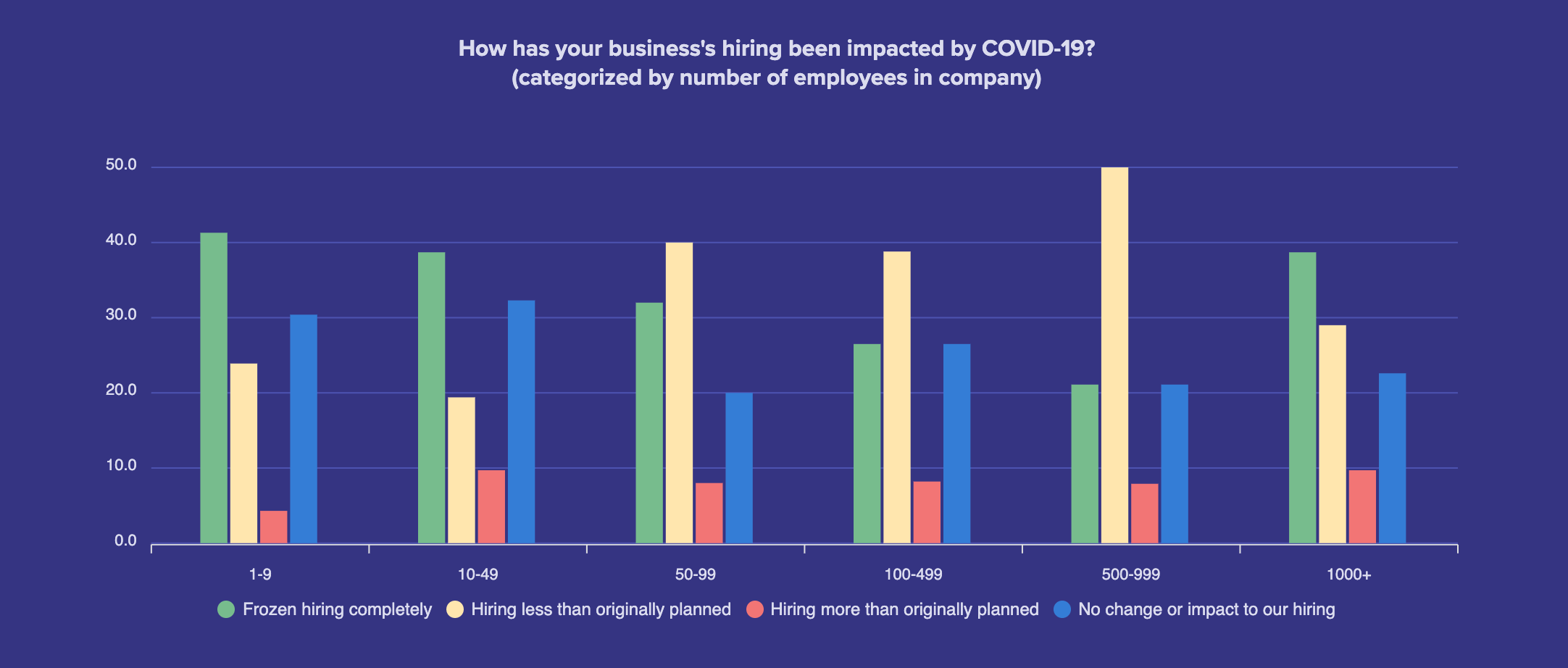How businesses responded to COVID-19 – and what they’re planning now
This is the first in a series of excerpts from our New World of Work survey report which was published in August 2020. More than 350 respondents filled out the 30-question survey, resulting in numerous compelling insights both for business and recruitment interests. Here, we learn the impact that COVID-19 had on business and processes.

In this chapter, we address the following questions:
- How did businesses respond to the COVID-19 pandemic?
- What were the effects of COVID-19 on business operations?
- How did COVID-19 change hiring?
- And finally: how are businesses planning for a post-COVID future?
Not only was COVID-19’s impact palpable, it was also very tangible and it forced action in many aspects of business. Let’s look at what our respondents did when COVID-19 became a reality for them.
Business response to COVID-19
As is now known, a significant impact of COVID-19 on business was that it triggered a sudden transition to a fully remote working environment where all employees worked from home. Our survey confirmed this – nearly two-thirds (62.6%) of respondents cited going fully remote as one of the actions their business took.
A third (32.3%) of respondents said they moved part of their operations to a remote environment. It bears noting that nearly a third of all respondents work in IT/technology – considered to be one of the most remote-friendly sectors.
A sizable percentage of businesses introduced precautionary measures at their working location (37.9%) and/or reduced capacity at work, if remote was not an option for all workers (18%).
“It’s going to look very different without a doubt. … Personally, I think it will be good for us, we were starting to lose focus of who we were, it was becoming less important to talk to people face to face and more important to stare at phones. … Yes, we will be using technology more in our day-to-day lives due to COVID-19, but now we are focusing more on what’s actually important.”
– Survey respondent
Economic impact
The economic impact of COVID-19 is also significant in our dataset. A full 12% shut down business altogether – albeit temporarily in most cases. All but one in hospitality and 26.1% of those in education shut down. In terms of company size, 21.7% of those in the 1-9 employee-size bracket opted to shut down temporarily, a far higher rate than any of the other size categories.
More than a fifth of our respondents reported that their businesses laid off or furloughed employees. When breaking down by company size, we found those in the 50-99 and 100-499 employee-size brackets were statistically more likely to lay off workers, with percentages choosing this option being 12.3 and 10.6 percentage points more than the percentages of total respondents in those brackets. The opposite was true for those with 10-49 employees, with just 17.1% in that category choosing to lay off or furlough workers, compared with 26.1% of total respondents falling into that size bracket.
And by industry, those in hospitality (62.5%) and manufacturing (50%) were more likely to turn to layoffs and furloughs as an option, whereas those in healthcare (7.4%) and education (4.3%) were far less likely to choose that route.
Changes going forward
When asked about the changes businesses are planning going forward, the response was comprehensive, with all listed options being selected widely. The most popularly selected moves are travel reduction (59.3%) and a shift to remote (56.5%). Closely following are plans to switch to staggered/flexible work schedules (44.9%) and a redesign of the physical working environment (44.1%).
Many of those in the “Other” category stated they aren’t entirely sure yet, with one indicating they want to see how other businesses fared before taking action of their own. Others plan to increase personal protective equipment (PPE), sanitation protocols, and overall employee safety either in the field or in the workplace. One respondent in the business/consulting sector plans to require clients to be tested beforehand.
Most striking is that just 6.2% of respondents stated that nothing is being planned going forward.
Whether it’s layoffs, a shift to remote, or redesigning workplaces, this response tells us that COVID-19 impacted the majority of businesses in our survey, and drastically altered their planning.
“I think that it will change a lot in the world. Adapting as we have gave us knowledge to be more flexible and change to remote working. I think many people will adapt more wellness programs and education.” – Survey respondent
Impact on hiring
COVID-19 was also readily felt in the hiring space. Two-thirds of respondents (65.2%) said they were hiring less during the crisis or had frozen hiring altogether. Just 8.1% said they increased their hiring in response. Although our own survey results don’t reflect it in terms of healthcare hiring, it’s well documented that healthcare, supply chains, telecommunications, and the mortgage industry are sectors that aggressively ramped hiring in the early days of the crisis.
Company size also dictated responses: smaller companies (1-49 employees) and larger, enterprise-sized companies (>1,000 employees) were the most likely to report that they’ve frozen hiring completely, while a full half of companies with 500-999 employees said they were hiring less than planned.
None of the six size categories saw more than 10% of respondents hiring more than planned.
Want to learn more? Navigate to:
- Chapter 2 on the magnitude of the shift to remote work
- Chapter 3 on the challenges of remote working and why
- Chapter 4 on the challenges of remote hiring and why
- Chapter 5 on the role of technology in remote work going forward
- Methodology and firmographics
- A collection of open-ended responses from those we surveyed.









